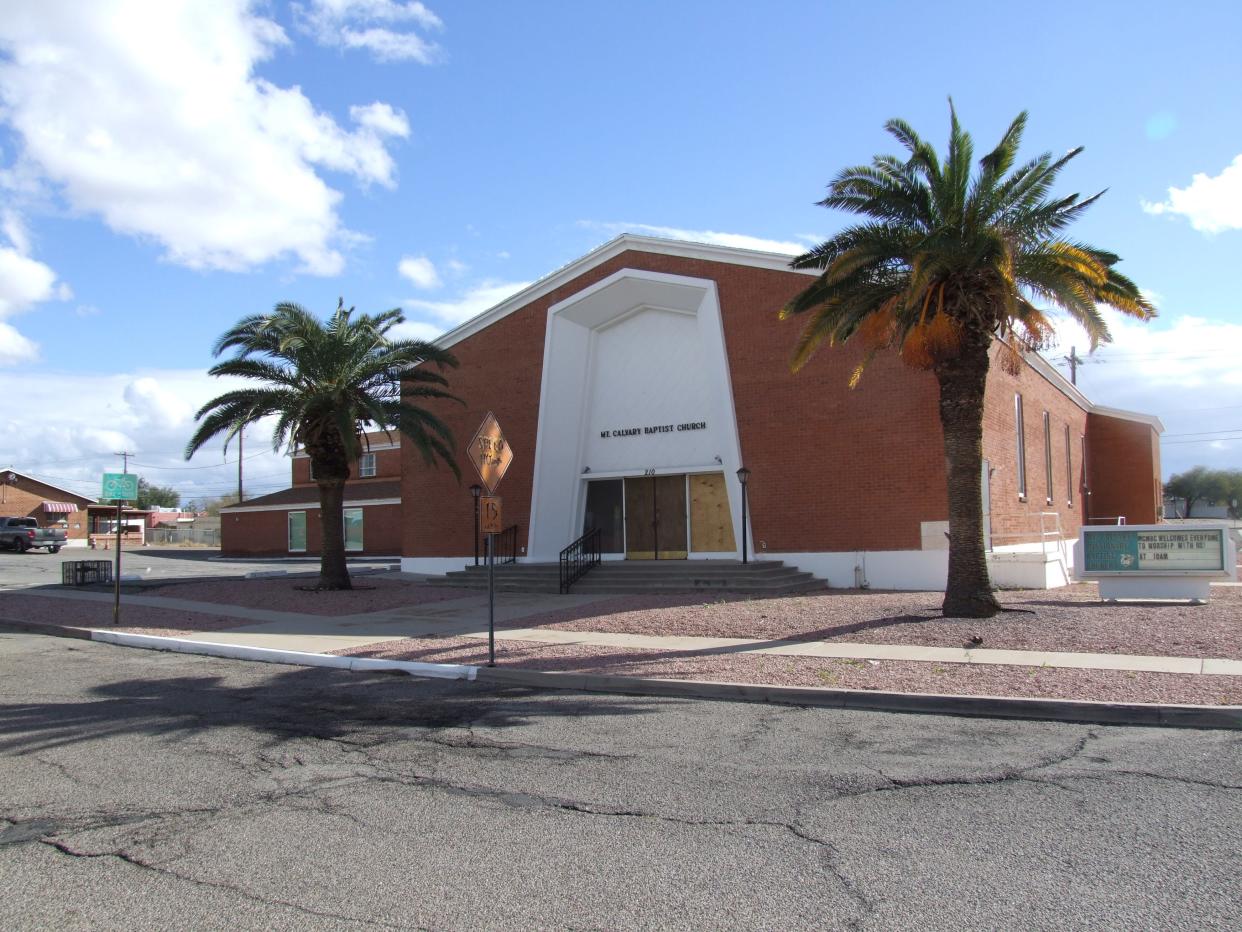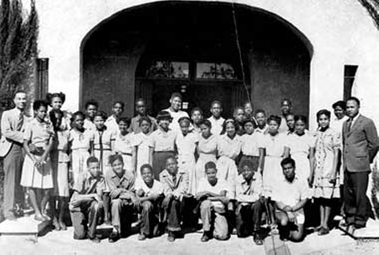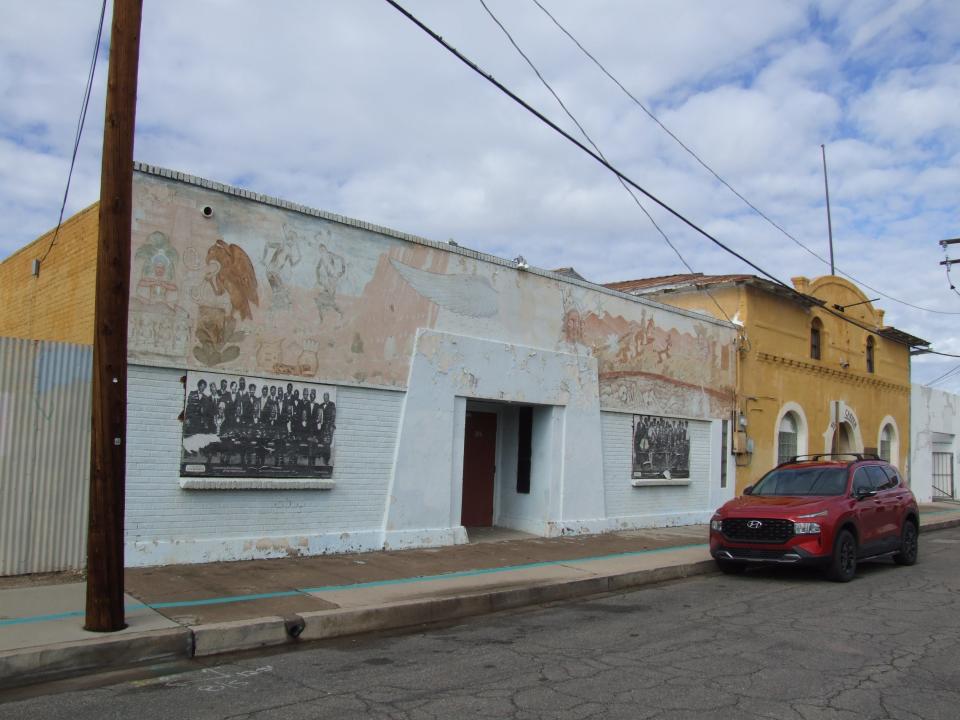Tucson takes steps to preserve African American history in its neighborhoods

The city of Tucson is diving into Black history with a project aimed at chronicling its historically significant structures, buildings and neighborhoods.
The city’s historic preservation office was awarded a $20,000 grant from the state for the first phase of the project.
The initial phase will be to identify the standing architecture and cultural sites within the city limits associated with the African American community. The second phase, which will need additional funding, will be to create a historic context document with the research and database from the first phase.
Jennifer Levstik, historic preservation specialist and a lead investigator for WestLand Resources will work on the project, diving deep into Tucson’s neighborhood histories.
“We are starting to lose some of these historic buildings,” Levstik said. “It is important for the city to understand which of these historical properties are associated with the African American community that we may not know about.”
She noted that knowing which buildings have historic significance will allow the city and community to better protect them, because it is not always obvious which buildings are associated with different groups.
One such building, the Beau Brummel Social Club, an African American social club and bar, was demolished in 2018.
Levstik said a developer sold the parcel and the property was demolished. Once people figured out the significance of the property, it was too late to save it.
Jodie Brown, Tucson’s historic preservation officer said while other smaller surveys have been conducted on this topic, this project will synthesize those studies and find other buildings that are historically important to the African American community.
What we already know
Levstik said she has done previous research also about Tucson’s African American community, and therefore knows of numerous properties to include in the database including churches and social organizations like the former Black Elks club in Barrio Viejo.
She said there are also a few schools she is aware of like the Dunbar School, a segregated middle school, and Marist College, an integrated school that provided high school education to African Americans, which Levstik noted was unusual for the time.

“Dunbar, which was established around the same time only had education through middle school. There was no high school equivalent for African Americans in Tucson,” Levstik said, noting the gap filled by Marist College.
Levstik said she would also like to find residences associated with prominent community members.
She is already aware of the residence of Cicero Simmons, the first principal of Dunbar School, located off Fourth Avenue, and the house of Ulysses Kay, a prominent jazz musician who lived in Barrio Viejo.
There are also several neighborhoods associated with the African American community that are well-known, one of which is Sugar Hill.
This historically Black neighborhood was one of the only places Black people could purchase a home between World War II and the 1960s, according to Sugar Hill Neighborhood Association.
Another is Dunbar Spring just north of downtown. According to the Dunbar/Spring Neighborhood Association, the neighborhood was named after John Spring, a prominent citizen and one of Tucson’s first teachers, and Paul Lawrence Dunbar, an African American poet.
Another neighborhood of interest for the project is A Mountain, located to the west of downtown. Levstik said the neighborhood was established and homesteaded by returning war veterans.
“There's lots of interesting places all around Tucson. A lot of them are kind of hidden,” Levstik said.
Levstik noted that while numerous buildings still stand, few historic Black-owned businesses are left, as many of them were located in the Barrio Viejo area downtown and removed during urban renewal in the 1960s.
During that time, all throughout the U.S., neighborhoods considered blight were razed, often resulting in the displacement of low-income communities of color.
At the time, Barrio Viejo was a vibrant multi-cultural neighborhood with blocks of adobe buildings, according to local experts.

“A swath of minority homes and businesses in an area covering over 80 acres was demolished, forcibly displacing nearly 1,200 residents,” stated a Tucson Displacement Study published by the University of Arizona Urban Planning Master's Students in collaboration with the City of Tucson.
To find other buildings and areas that are of historic importance to the African American community, Levstik and her team will look through city directories, telephone books, and examine the Arizona Historical Society Library’s ephemera files, or documents and memorabilia.
They will also reach out to community members and scholars such as the Dunbar Coalition, the organization that revived the Dunbar school — now the Dunbar Pavilion: An African American Art & Culture Center — and Bernard Wilson, a local African American scholar.
Historical context
Levstik said African American migration to Arizona began during the 1800s and early 1900s as many had joined the military. Many went to Fort Huachuca, while some also worked as cowboys. However, during the 1920s and 1930s, movement of African Americans to Arizona peaked.
She said many African Americans were recruited to work in the agricultural fields in places like Marana and Pinal County to grow staples like cotton. They were also recruited to work in logging communities up north.
Movement to Arizona also occurred after World War II when returning war veterans moved to the state for work.
Brown said with this project, she is bringing Tucson in line with other cities that often document the buildings, structures and districts important to the various ethnic communities and different groups that make up the city.
Brown said Tucson is finishing up the first phase of its Asian American survey, recording the buildings and areas that are historically important to the Asian American community.
In the future, she hopes to launch other surveys for buildings associated with the Native American and Latinx communities.
Brown noted how conducting these surveys help paint a more complete picture of Tucson’s overall history.
“Tucson isn’t just one segment, it’s this wide colorful full history, and there are a lot of components to it,” Brown said.
Neighborhood Association 'disappointed' in survey's outreach process
Sadie Shaw is a Tucson Unified School District board member, the former president of the Sugar Hill Neighborhood Association and an oral historian for the Sugar Hill Oral History project.
She said the survey being conducted in Tucson is necessary and important work.
“It should have been done decades ago,” she said.
However, Shaw also said she was disappointed that neighborhoods that will be included in this research were not contacted at the beginning of the survey planning.
Shaw found out about this project when The Arizona Republic reached out to her for a comment.
“It seems like the outreach is happening last, like the neighbors, the black neighbors, the neighborhoods are being notified of this at the final point of the process,” Shaw said.
Shaw started her own oral history project in Sugar Hill, featured in this Arizona Public Media video, to help make the neighborhood's history, and the lives of its residents as well as the Black Tucson community more visible.
Her worry is this survey, led by an outside organization instead of the neighborhood residents themselves who are undertaking oral history projects, will overshadow the work being done by community members.
Her hope is to find support from the city to preserve these oral histories.
“The Sugar Hill Community Land Trust and the Sugar Hill Oral History Project, we are two organizations in the neighborhood, we are not alone, there are other Black-led organizations around town that are starting the process doing oral histories in their area,” Shaw said.
Brown, with the city of Tucson, responded that the survey is being conducted city-wide, and while it will have elements of the history of the buildings, areas and notable people, it will not be in-depth like the neighborhood oral history projects.
"Ultimately, the survey and the individual oral history projects will complement each other," Brown said in an email. Brown said the city reached out to the Dunbar School when they were considering applying for funding for the grant.
This article originally appeared on Arizona Republic: Tucson preserving African-American history in its neighborhoods

